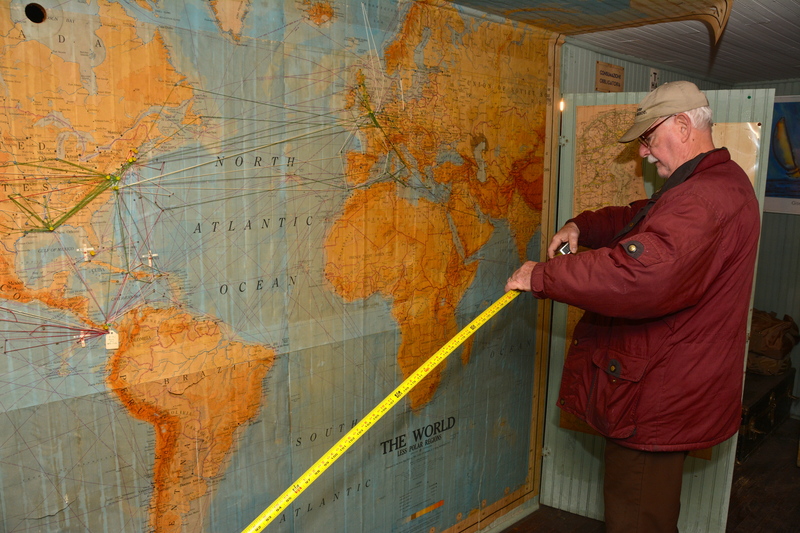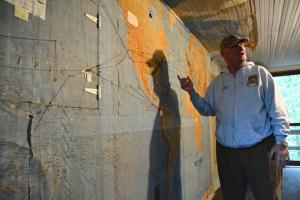A priceless artifact of World War II has been discovered in an old shed in Rehoboth Beach, and the Fort Miles Historical Association is stepping in to preserve it.
Unlike the 16-inch USS Missouri gun barrel the association brought to Fort Miles two years ago, the new discovery is a massive document: a fragile, 90-square-foot map glued to the wall of a storage shed that tells the little-known story of more than 3,500 submariners who were lost at sea during World War II.
Gary Wray, president of the association, said U.S. Navy Rear Admiral Henry Draper Sipple used the wall map to detail submarine battles of World War II.
“It's amazing," Wray said. "It's the map of his life and the story of submarine warfare in the Pacific.”
Sipple passed away in 1992 at the age of 79, but the map has remained on the shed wall. A 1937 U.S. Naval Academy graduate, Sipple served for decades before retiring to Rehoboth Beach, where he started plotting submarine battles in his shed, on a map glued to the wall.
“I can just imagine him here, working on this,” Wray said. “This is a local World War II artifact belonging to a local person. We need this in our museum.”
Sipple was born in Milford and has deep roots in southern Delaware, with relations in the Sipple, Grier and Draper families, Wray said. Sipple commanded the USS Trench and won a Bronze Star in 1944.
Sipple mapped in detail the location of each of the 52 submarines lost in the Pacific Theater, depicting each one with a small white cross, with the name of the sub and number of casualties shown on the map.
Using color-coded strings, he also traced the many locations around the world where he served or visited before, during and after World War II. The strings cross the United States and Canada as well as Europe, Australia, South America, the Caribbean and even the Middle East.
Wray said the significance of the map is that it shows in detail a little-publicized part of World War II history, when from late 1943 to 1945, U.S. submarines attacked Japanese merchant ships. The U.S. Navy adopted a policy of unrestricted submarine warfare in an effort to cripple Japan's economy and cut off its supply lines of food and military cargo.
Of the nearly 9 million tons of cargo destroyed by the Allies in the Pacific Theater, U.S. submarine attacks destroyed 5 million pounds, records show.
“We adopted the same tactics the German wolf packs did in the Atlantic and eventually destroyed the Japanese merchant marine,” Wray said. The big difference was the efficiency, skill and power of U.S. submarines. While the Germans lost 775 subs in the Atlantic, the United States lost 52 submarines, all but two in the Pacific.
The map pays homage to those who were lost; Sipple listed the casualties as 3,131 men and 374 officers. Forty-eight of the subs were lost during action; their crews were lost at sea.
“This story does not get told,” Wray said. “It really hits you when you look at this map. Each one of the crosses is a story.”
Association members are working with the property owner - who wants to remain anonymous - to determine the best course of action to remove the 12.5- foot-by-7-foot map from the wall. “It's in good condition considering how long it's been glued to the wall,” Wray said.
Short of removing the wall, it's still going to be an undertaking that needs professional assistance, Wray said. “We need a paper conservator to make this happen,” he said. “We need to know how to stabilize, encapsulate and move it.”
See more about the Fort Miles Historical Association at fortmilesha.org.























































